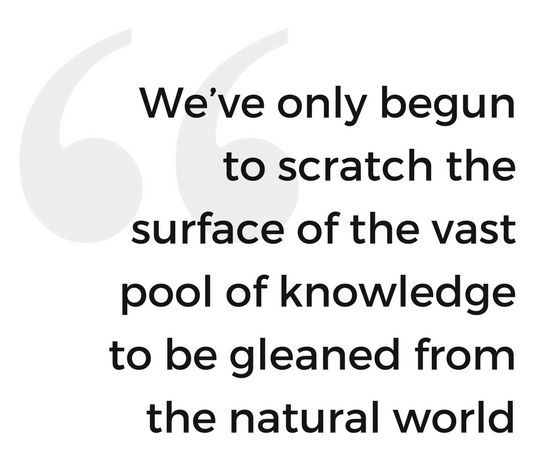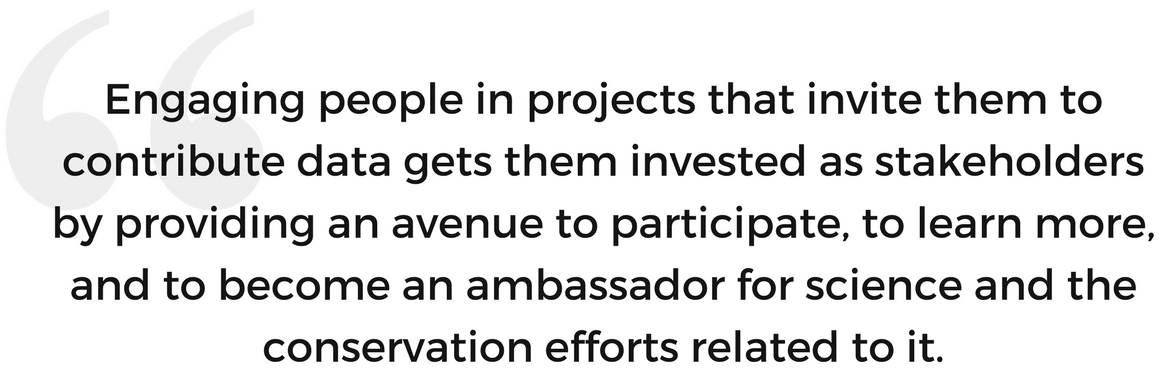 ong before humans had the technology to unearth and burn fossil fuels, our behavior contributed to widespread land degradation that threatened plant and animal life the world over. While climate change-driven forest loss subtracts from the global stock of biomass that acts as a carbon sink, human-driven land degradation brings its own unique tragedies. The loss of biodiversity caused by forest, wetland, or other ecosystem degradation puts species at risk of extinction, while we’ve only begun to scratch the surface of the vast pool of knowledge to be gleaned from the natural world.
ong before humans had the technology to unearth and burn fossil fuels, our behavior contributed to widespread land degradation that threatened plant and animal life the world over. While climate change-driven forest loss subtracts from the global stock of biomass that acts as a carbon sink, human-driven land degradation brings its own unique tragedies. The loss of biodiversity caused by forest, wetland, or other ecosystem degradation puts species at risk of extinction, while we’ve only begun to scratch the surface of the vast pool of knowledge to be gleaned from the natural world.
These issues jeopardizing life on land are not new. History provides myriad examples of what the degradation of life on land means for people and civilizations alike. And yet, despite having the lessons to learn from, what for much of human history was a regionally isolated issue has now become a worldwide crisis.
I would argue that most all people fall into one of three categories regarding how they perceive the issues impacting life on land:
Category 1: People who care and are engaged already, either in their careers or as private citizens.
Category 2: People who care, but don’t know what to do about it or have been too busy to engage.
Category 3: People who don’t care, but given a deeper personal connection, they likely would.
In this article, I want to offer up a strategy for flipping the high percentage of people grouped into Category 2 into Category 1: people who care but are not engaged to people who care AND who engage. That strategy is citizen science.
Citizen science refers to non-professional volunteers who contribute to a science project in some way, often in the form of collecting data. The more people we can bring into Category 1, the better shot we have at meeting the targets set by Sustainable Development Goal #15: Life on Land.

Engaging people in projects that invite them to contribute data gets them invested as stakeholders by providing an avenue to participate, to learn more, and to become an ambassador for science and the conservation efforts related to it.
I invite you to read another article I have written for Unreasonable.is on how to enlist others in your ideas. It’s a great philosophical background for the argument I make here, which is that engaging people directly in your project as citizen scientists can put the global community on a faster track towards reaching the UN’s 17 Sustainable Development Goals.
Most people who fall into Category 2 are simply too concentrated on their own day-to-day needs to actively engage with issues that seem to exist far away in the world. They might be working families trying to make ends meet, or unmarried urban dwellers focused on paying their rents. Global challenges will not be solved in isolation, and citizen science can be the hook that entices everyone, everywhere, to get involved and to make a contribution to the solution.
Below are some tips and resources to help leverage the power of citizen science, whether it’s starting a project, joining one, or promoting the field itself, knowing that the more people engage around issues facing life on land, the sooner we may bring about solutions to land degradation, deforestation, and desertification.
Start Your Own Project
There are amazing low-to-no cost toolsets available that you can use to engage groups of people in your project. Here are a few big players in this space. Keep in mind, these are tools that are about engaging people in collecting data that will contribute to your work in some way.
FieldScope – Full disclosure, I proudly helped to build this tool and continue to support its growth and development. FieldScope is a platform that new or existing citizen projects can use to have their participants collect and submit data, and then interact with this data in dynamic mapping and graphing tool. Projects using FieldScope include FrogWatch USA and Globe at Night (see more on those below).
CitSci.org – Similar to FieldScope, on this site you can easily queue up a project that you can invite people to contribute to. It has less sophisticated functionality for interacting with this data in maps and graphs compared FieldScope, but big points for its simplicity. Over 400 projects have started citizen science engagement with CitSci.org.
iNaturalist – iNaturalist is an app and a global social network where people can submit wildlife observations and may be useful to you if engaging volunteers around identifying biodiversity is something that would be beneficial to you. Within the iNaturalist community you can queue up projects that you can use for engaging people in recording wildlife sightings in a specific area, or of a specific type (e.g., for example, as part of a bioblitz). Or individuals can participate on their own and contribute to the iNaturalist community.
Zooniverse – Zooniverse is a platform for starting projects (or joining existing ones) and they bill themself as the world’s largest and most popular platform for people-powered research. Projects on Zooniverse are often computer-research based where participants can contribute right from their homes or schools.

Join An Existing Project
Maybe starting a new project or bringing your existing project to a new audience through citizen science doesn’t make sense for you. But perhaps joining, supporting, or promoting an existing project does. SciStarter has over 1,000 projects for you to sort through to find an inspiring match for you, including citizen science projects in fieldscope like archaeology, health, transportation, and everything in between.
Here’s a highlight list of projects that you could get involved with today:
Litterati
Adventure Scientists
Project BudBurst
FrogWatch USA
Globe at Night
eBird
Support the Field
If you are not up for starting or joining a project, but are interested in staying abreast of developments in the field and supporting the future of citizen science, join the growing community of the Citizen Science Association.



